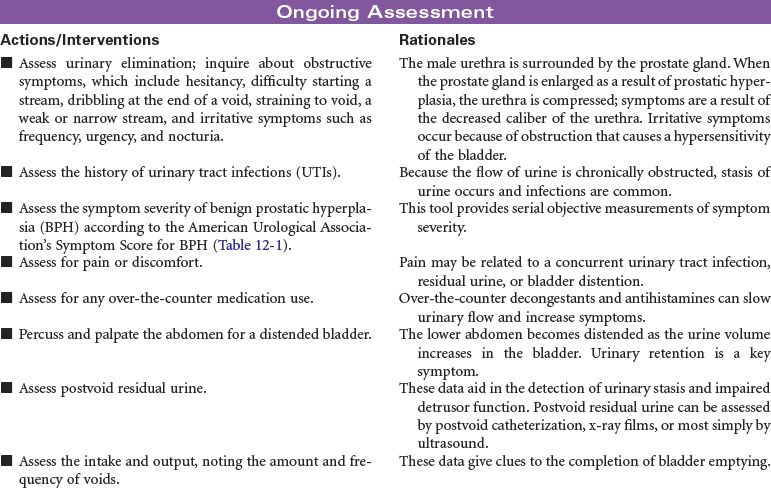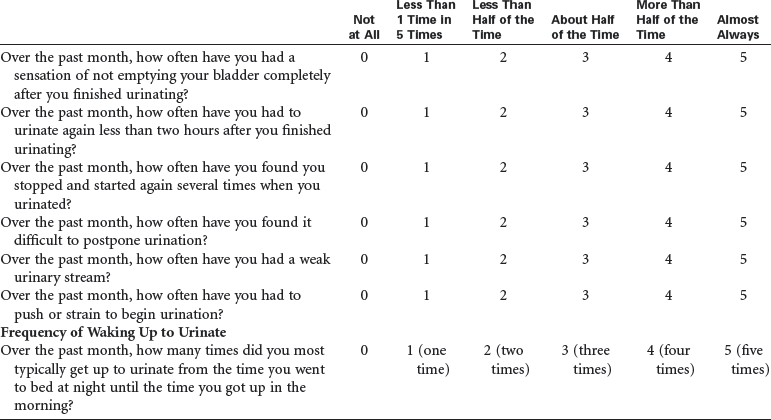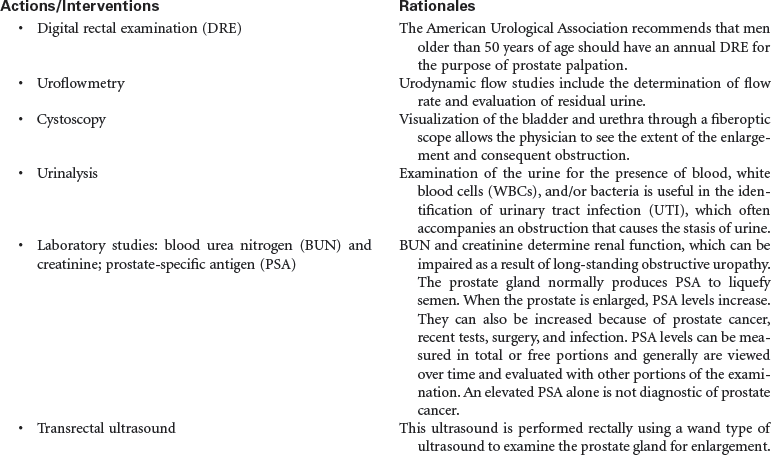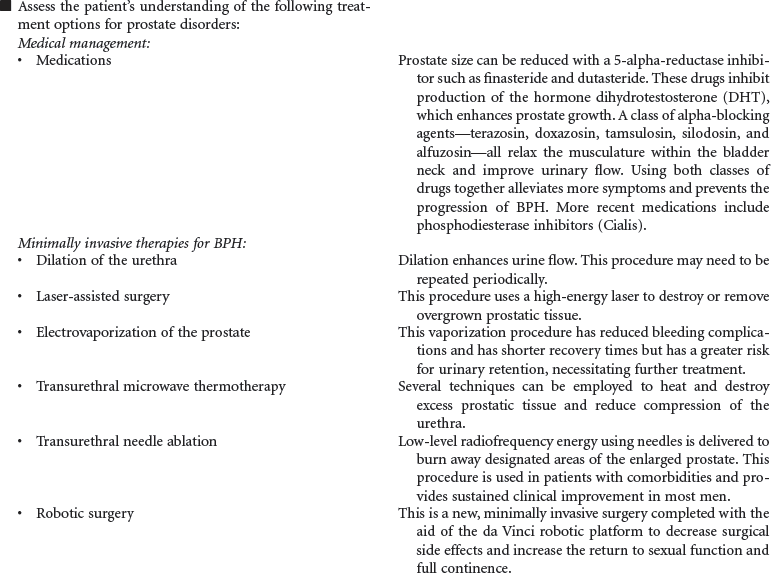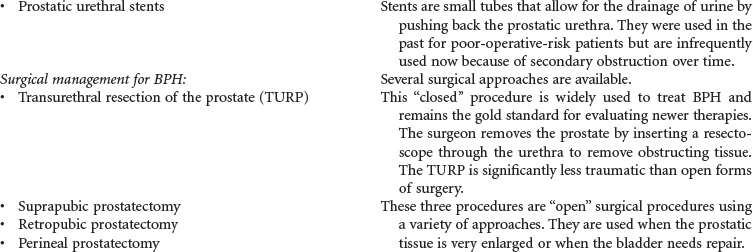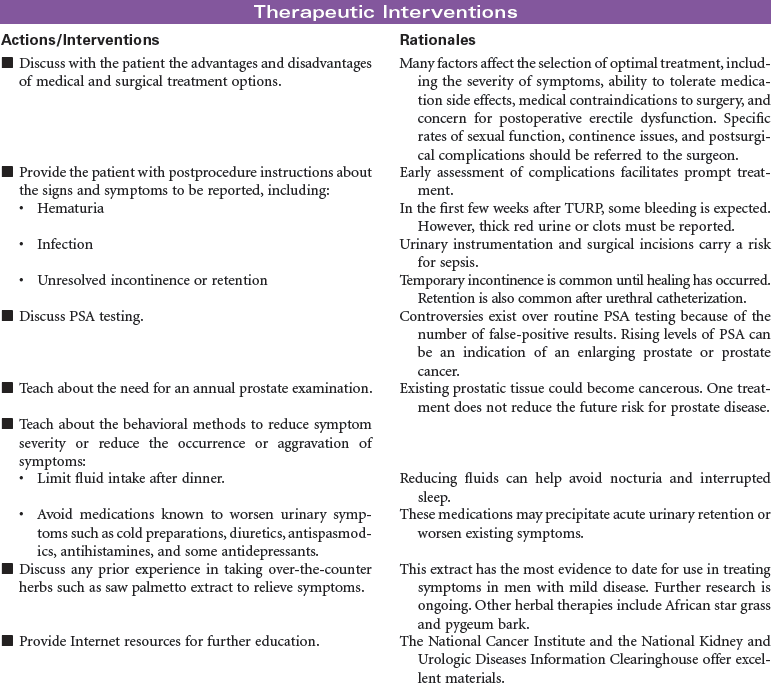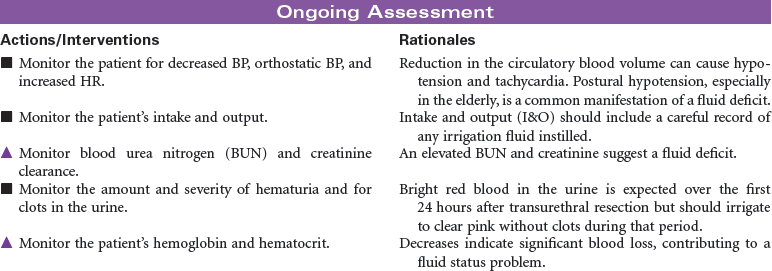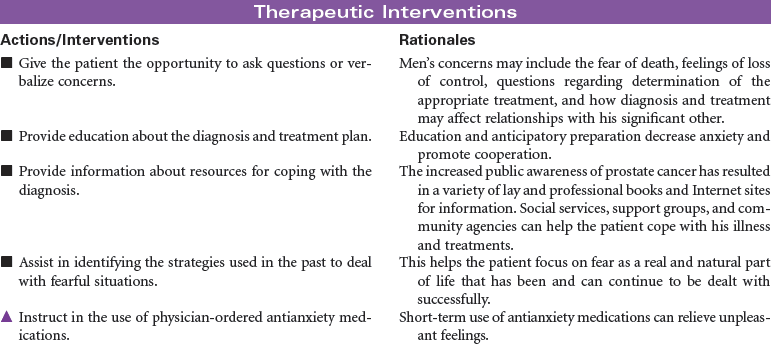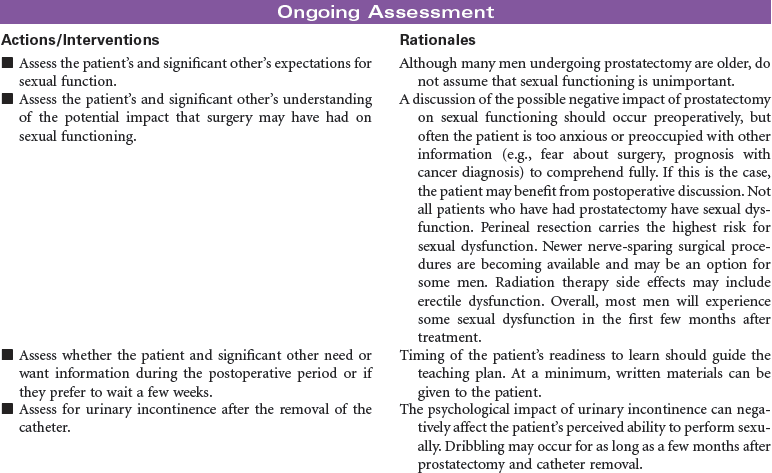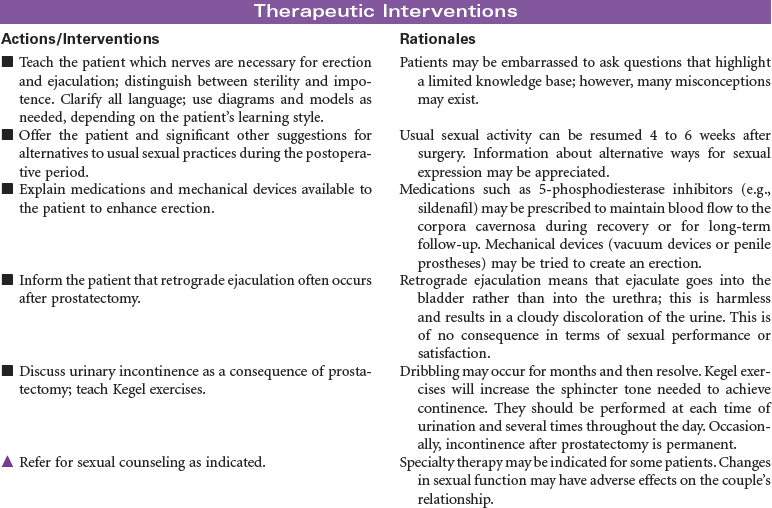Chapter 12 Mild = 0 to 7 points; moderate = 8 to 19 points; severe = 20 to 35 points. From American Urological Association. (2010). American Urological Association guideline: Management of benign prostatic hyperplasia (BPH). Revised, 2010. American Urological Association Education and Research, Inc. Available http://www.auanet.org/content/clinical-practice-guidelines/clinical-guidelines.cfm?sub=bph. Accessed on October 2012.
Men’s Health Care Plans
Benign Prostatic Hyperplasia
![]() Urinary Retention
Urinary Retention
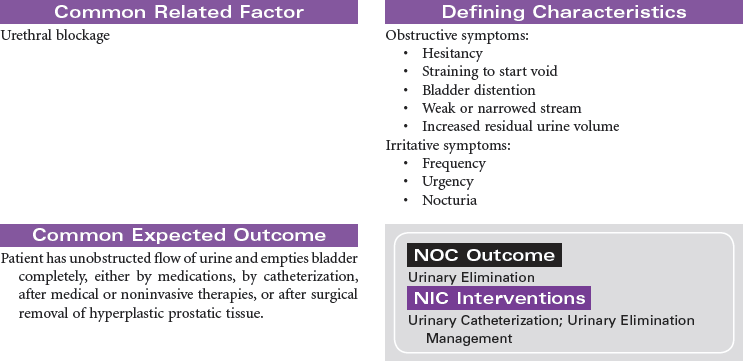
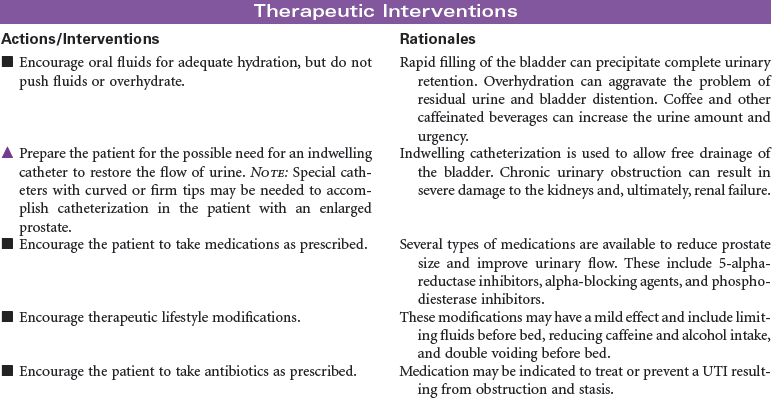
Men’s Health Care Plans
Get Clinical Tree app for offline access

